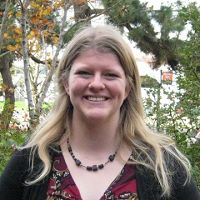Lybrand & Rasmussen, 2014
A Cross-scale Study of Feldspar Transformation in the Santa Catalina Mountain Critical Zone Observatory
Lybrand R.A. and Rasmussen C (2014)
Procedia Earth and Planetary Science 10: 63–68
-
Calhoun, Catalina-Jemez, COLLABORATOR
-
Catalina-Jemez, INVESTIGATOR
Abstract
The critical zone evolves from coupled biological, physical, and geochemical processes that we quantify here across varying climatic and topographic conditions. The specific objective of this work was to examine how climate, landscape position, and vegetation drive feldspar weathering across the Santa Catalina Mountain Critical Zone Observatory, which exhibits considerable range in temperature (24 to 10 °C), precipitation (25 to 85 cm), and vegetation community composition (desert scrub → mixed conifer). Granitic soils and parent rock were characterized using a profile development index, quantitative x-ray diffraction, and electron microprobe analyses. Profile development indices increased linearly with increasing MAP/PET ratios (r2 = 0.48), with higher degrees of soil development in convergent footslope positions. Bulk soils from the desert scrub sites were enriched in total feldspar relative to quartz in both landscape positions, ranging from +2 to +24% compared to the mixed conifer soils, which exhibited maximum total feldspar depletions of -13% in the convergent soils and -3% in the divergent sites. Microscale Na depletions increased significantly from unaltered to altered feldspar grain sections, with more tightly constrained Na losses in the mixed conifer grains compared to those from the desert scrub environment. Greater soil development and feldspar transformation in the conifer soils documented interactive climate and vegetation controls on mineral weathering in bulk soils and at the microscale. Furthermore, the larger profile development indices in the convergent landscapes demonstrated the importance of studying hillslope-scale soil development along environmental gradients, where localized increases in mineral transformation likely results from greater moisture availability and organic inputs in water-gathering landscape positions.
Citation
Lybrand R.A. and Rasmussen C (2014): A Cross-scale Study of Feldspar Transformation in the Santa Catalina Mountain Critical Zone Observatory. Procedia Earth and Planetary Science 10: 63–68. DOI: 10.1016/j.proeps.2014.08.012
 This Paper/Book acknowledges NSF CZO grant support.
This Paper/Book acknowledges NSF CZO grant support.
Explore Further


